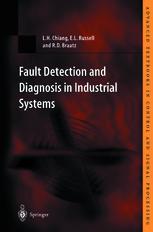

Most ebook files are in PDF format, so you can easily read them using various software such as Foxit Reader or directly on the Google Chrome browser.
Some ebook files are released by publishers in other formats such as .awz, .mobi, .epub, .fb2, etc. You may need to install specific software to read these formats on mobile/PC, such as Calibre.
Please read the tutorial at this link: https://ebookbell.com/faq
We offer FREE conversion to the popular formats you request; however, this may take some time. Therefore, right after payment, please email us, and we will try to provide the service as quickly as possible.
For some exceptional file formats or broken links (if any), please refrain from opening any disputes. Instead, email us first, and we will try to assist within a maximum of 6 hours.
EbookBell Team

5.0
48 reviewsEarly and accurate fault detection and diagnosis for modern chemical plants can minimise downtime, increase the safety of plant operations, and reduce manufacturing costs. The process monitoring techniques that have been most effective in practice are based on models constructed almost entirely from process data.
The goal of the book is to present the theoretical background and practical techniques for data-driven process monitoring. Process monitoring techniques presented include: Data-driven methods - principal component analysis, Fisher discriminant analysis, partial least squares and canonical variate analysis; Analytical Methods - parameter estimation, observer-based methods and parity relations; Knowledge-based methods - causal analysis, expert systems and pattern recognition.
The text demonstrates the application of all of the data-driven process monitoring techniques to the Tennessee Eastman plant simulator - demonstrating the strengths and weaknesses of each approach in detail. This aids the reader in selecting the right method for his process application. Plant simulator and homework problems in which students apply the process monitoring techniques to a non-trivial simulated process, and can compare their performance with that obtained in the case studies in the text are included. A number of additional homework problems encourage the reader to implement and obtain a deeper understanding of the techniques. The reader will obtain a background in data-driven techniques for fault detection and diagnosis, including the ability to implement the techniques and to know how to select the right technique for a particular application.